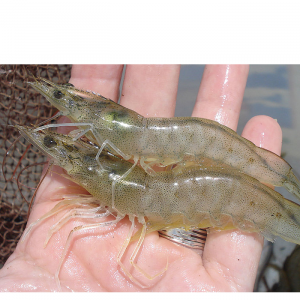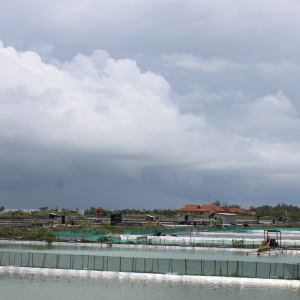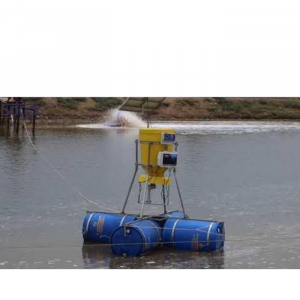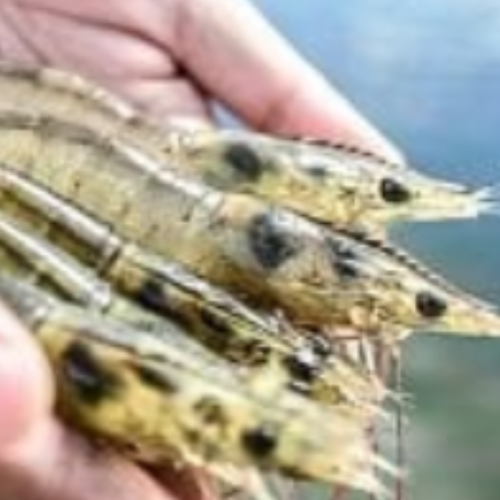
A Diet-Based Breakthrough in The Battle Against Early Mortality Syndrome in Shrimp
| Tue, 05 May 2020 - 08:18
In a new study, US and Vietnamese researchers found that farm-raised Pacific white shrimp (Litopenaeus vannamei) fed a diet formulated with Veramaris Natural Marine Algal Oil and Menon Renewable Product’s MrFeed had significantly higher survival rates for early mortality syndrome (EMS) / acute hepatopancreatic necrosis syndrome (AHPNS) compared to shrimp fed diets containing fishmeal and fish oil.
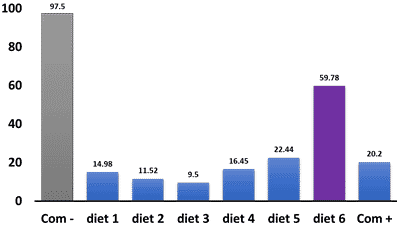
Shrimp fed the Veramaris/Menon feed formulation had roughly 60 percent survival. The Com- and Com+ groups were fed identical diets with the Com+ receiving bacterial challenge
EMS/AHPNS, caused by the bacterium Vibrio parahaemolyticus, has had a significant impact on shrimp production globally, with mortality rates as high as 100 percent in the first 30 days.
The technical article, published in last week’s edition of the Global Aquaculture Alliance’s Advocate, examined the benefits of total fish oil and fishmeal replacement in the shrimp diet and found that it was not only technically feasible, but endowed shrimp with enhanced immunity. The Veramaris algal oil, rich in both EPA and DHA omega-3, constituted a complete fish oil replacement. Fishmeal was replaced with Menon’s sustainable and functional Oleo-Protein, produced by converting plant-based products into highly digestible nutrients and high nucleotides and small chain peptides that appear to serve as a universal immune stimulant.
Future studies would be needed to assess if this diet enhances the immune system against viruses, including Decapod iridescent virus 1, or DIV1, currently impacting Chinese shrimp farms.
Pacific white shrimp is the most widely cultivated shrimp in the world, which along with tiger prawn (Penaeus monodon) account for roughly 80 percent of farm-raised shrimp globally.
In the 40-day trial conducted at the ShrimpVet Laboratory in Vietnam, the research team compared the Veramaris/Menon diet to six other experimental and commercial feeds to assess the animal’s ability to withstand an EMS/AHPNS infection.
The researchers found that 60 percent of the shrimp fed the Veramaris/Menon diet survived. These results were significantly higher than all other experimental and commercial diets tested, which ranged between 9 and 22 percent survival.
“The study demonstrates that shrimp, and likely many other species, can be fed diets without fishmeal and fish oil, thereby enabling aquaculture expansion to continue unabated, despite fluctuations in forage fish resources,” said the study’s lead author Ewen McLean, principal at Aqua Cognoscenti. “A higher survival rate results in better yield and improved feed conversion ratios since less feed is wasted.”
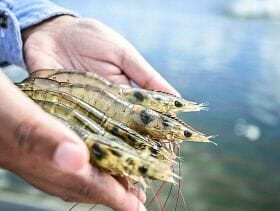
In a related study published in the online edition of the journal Aquaculture, the research team substituted fishmeal with blends of soybean meal, soy protein concentrates and poultry by-product meals to examine growth rates of Pacific white shrimp.
Those results showed that fishmeal replacements do not affect the animal’s growth performance and that complete replacement of fishmeal in Pacific white shrimp is possible. No antibiotics were used before or during either study.
Fish farming, or aquaculture, now provides more than half of the world’s seafood. Aquaculture-raised seafood, one of the fastest growing food sectors in the world today, is expected to fill in the supply-demand gap for high-quality, easily-digested protein as the world population expands.
Currently, many forage fish are ground up to feed the burgeoning aquaculture sector. Aquaculture consumes 70 percent of total fishmeal and 73 percent of total fish oil production. Crustaceans alone, including shrimp, consume roughly 31 percent of global fishmeal production.
As shrimp aquaculture continues to expand globally there is an urgent need to prevent emerging disease and resistant pathogens which stem from the overuse of antibiotics in shrimp farming. The chemicals and antibiotics used to prevent disease in shrimp farms can pollute groundwater and coastal estuaries, which provide the nursery grounds for many marine organisms.
Feeding forage fish to aquaculture-raised animals presents a sustainability issue because of its reliance as a major building block of the food chain for seafood. A recent study estimated the global economic benefit of forage fish to be $18.7 billion per year, over three times their direct catch value. Overfishing and disappearance of this building block would result in a collapse of higher trophic species that depend on forage fish, which would have a ripple effect on many commercial fisheries, including salmon, cod and tuna as well as many ocean tourism-based economies.
These fish also sustain seabirds and marine mammals such as whales, seals, and dolphins. If the fish at the center of the ocean food chain disappear, so will the life that depends on them.
“This study evaluated the nutritional value of shrimp feeds without fishmeal and fish oil, and using new innovative ingredients and found them very effective,” said fish nutritionist Rick Barrows of Aquatic Feed Technologies LLC and co-author of the study. “The next question is the cost of improved feeds. Since each farming operation is different, costs will reflect each operation.”
Source: The Fish Site













